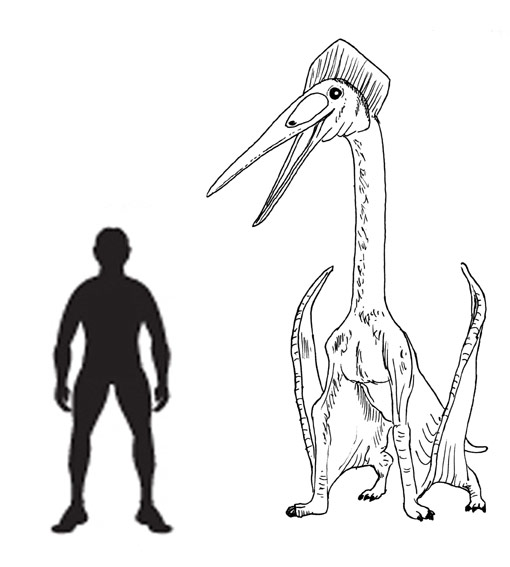Dublin Team Announces Discovery of New Pterosaur
Earliest Known Member of Azhdarchidae Pterosaurs Announced
A team of Dublin scientists have published a paper in the on line scientific journal PLOS ONE on the discovery of the fossilised remains a 95-million-year-old pterosaur, found on the Moroccan/Algerian border. The fragile and delicate fossils represent the earliest known specimen of an azhdarchid pterosaur, the family of the Pterosauria that persisted until the very end of the age of Dinosaurs, and led to the evolution of some of the largest pterosaurs of all.
Azhdarchid Pterosaur
Expedition leader and University College of Dublin doctoral research scholar Nizar Ibrahim commented on the field work which took place in south-eastern Morocco, close to the border with Algeria:
“Before you go, you dream of finding something special.”
Scientists from the UK, Ireland and Morocco visited the Kem Kem plateau, a parched an arid environment today, but during the middle of the Cretaceous this area was a lush river basin with a diverse flora and fauna. The pterosaur fossils have been dated to approximately 95 million years ago (Cenomanian faunal stage of the Cretaceous).
The researchers had suspected that this terrain carried a high chance of finding the low density bones of pterosaurs that needed to be flimsy and lightweight for flight.
Nizar stated:
“We heard of this locality that nobody had explored before.”
Pterosaur Jawbone
The research team excavated a large pterosaur jawbone. It had been broken into three pieces, these elements and some partial cervical vertebrae (neck bones) have led the team to identify and name a new genus of flying reptile. This new azhdarchid pterosaur has been named Alanqa saharica, the genus name has been derived from the Arabic word al-anqa, which means phoenix, the species name honours the desert environment, from which the delicate fossils were extracted.
This new azhdarchid pterosaur had an estimated wingspan of approximately 6 metres, making it far larger than any extant bird species today. Although, a large animal, the hollow bones and delicate body would have made this animal extremely light, perhaps weighing no more than a medium sized dog. The largest known azhdarchids are from the very end of the Cretaceous with creatures like Quetzalcoatlus (Q. northropi) having wingspans in excess of 10 metres.
A Scale Drawing of an Azhdarchid Pterosaur (Hatzegopteryx)
Nizar Ibrahim commented:
“They [azhdarchid pterosaurs] appeared late in the age of the Dinosaurs, and we don’t have many fossils of animals from this group.”
The scientists have noted that this pterosaur had a remarkable lower jaw. The toothless jaw was shaped like a lance, the lower jaw being very narrow and ending in a sharp point. It is not known what this animal ate, but the scientific team have described the jaws as “heron-like” indicating that this animal probably ate fish. The fossilised remains of two other types of pterosaur have also been recovered from the Kem Kem plateau by the team, indicating that in this part of the world during the Cretaceous pterosaur numbers may have been quite large.
To view models and replicas of pterosaurs: Wild Safari Prehistoric World.


